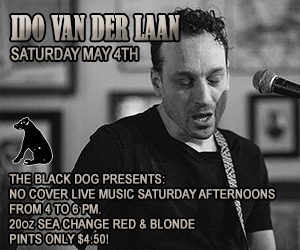REVIEW: Heavy elephant drama inspired by Lucy
Posted on December 2, 2018 By Colin MacLean Entertainment, Front Slider, Theatre
 As Romney, the marketing consultant in Workshop West’s production of Conni Massing’s new play Matara observes, “Everyone knows you really can’t call yourself a zoo without an elephant.”
As Romney, the marketing consultant in Workshop West’s production of Conni Massing’s new play Matara observes, “Everyone knows you really can’t call yourself a zoo without an elephant.”
By now, everyone in Edmonton should know that this probably sums up much of the attitude that keeps Lucy, our lone elephant, from being trucked to warmer climes and the company of her fellow pachyderms. Beyond the steel gates and electric fencing of the 2,600 square foot barn at the Valley Zoo, Lucy has become a flashpoint in the raging debate over whether elephants should be held in captivity at all. Her keepers maintain that Lucy is not strong enough to withstand the trip to elephant Nirvana, and they are truly a family for her. Beyond that imbroglio is the fact that we love our elephant. The sight of that great wall of grey skin walking sedately about the grounds has thrilled many a child (she’s been here since 1977).
 At the Arts Barns’ Backstage Theatre through December 9, Matara is not a documentary. It is not a screed about the virtue of keeping a tropical Sri Lankan elephant in a city where the mercury sometimes dips to well below Minus 20. It’s not even about our Lucy, but a dramatic fiction based on her story. Massing, in a move away from her usual whimsical approach, has written a relationship story.
At the Arts Barns’ Backstage Theatre through December 9, Matara is not a documentary. It is not a screed about the virtue of keeping a tropical Sri Lankan elephant in a city where the mercury sometimes dips to well below Minus 20. It’s not even about our Lucy, but a dramatic fiction based on her story. Massing, in a move away from her usual whimsical approach, has written a relationship story.
It is with this knowledge that Massing’s engaging play begins. The much-produced Edmonton writer and playwright (full disclosure: Massing and I wrote the Royal Command Performance for the Queen in 2005) has taken the bones of the Lucy story and created her own gripping narrative. The arguments for (“The animals in the zoo are ambassadors for their species”) and against (“It is wrong to place a wild animal in captivity”) are deftly triangulated by three very different characters, all with points of view, and all effectively giving their views a human face.
 They include Romney (Patricia Zentilli), who wants the zoo to abandon all constraints and use the animals in any way to raise money. A second character, Marcel (Minister Faust), a guard, is from Africa, has known the animals in their original habitat and resists the temptation to anthropomorphize them. As the play begins, the obsessive Karen (Elinor Holt), Matara’s long-time keeper, is worried that her beloved charge is really ill and is convinced that only she can save her (“I am the only family she has ever known”).
They include Romney (Patricia Zentilli), who wants the zoo to abandon all constraints and use the animals in any way to raise money. A second character, Marcel (Minister Faust), a guard, is from Africa, has known the animals in their original habitat and resists the temptation to anthropomorphize them. As the play begins, the obsessive Karen (Elinor Holt), Matara’s long-time keeper, is worried that her beloved charge is really ill and is convinced that only she can save her (“I am the only family she has ever known”).
Massing sure knows how to tell a story. Through often quite poetic asides, lectures, dialogue, monologues and speeches, she gives us a commentary on how her characters feel at any given moment. All sides of the prickly argument are brought out, but storm clouds are gathering and the playwright deftly slides into fantasy as Karen turns her back on reality. Her obsessions, vivid dreams and illusions of running away to Africa with her beloved friend become real to her.
The three actors portray their characters with a solid believability. Romney is brittle and controlling, but Zentilli tears away the obvious to show the frightened little girl beneath, out of her depth. Faust is an immensely likeable and accessible actor. Holt may be going bonkers but she carries us with her the whole way.
This is one production where the staging is vital to the story. Director Tracy Carroll has turned to local puppeteer Randall Fraser (he designed the huge disappearing shade of “Christmas Yet to Come” for the Citadel’s A Christmas Carol) and, conspiring with set designer T. Erin Gruber and sound designers Darrin Hagen and Nick Samoil, have created a rather imposing elephantine presence. Matara is physically mostly large ears and an articulated trunk, but with very effective sound effects and manipulation by the three actors, she takes on a striking physical life. The range of emotions transmitted is quite astonishing. Gruber’s projections are forceful throughout ending in a remarkable recreation of Noah’s Flood.
We are never quite sure where Massing stands philosophically in all this but she certainly unearths all sides of the argument. The play wanders a bit in the second half. The playwright has established where the characters are heading and the forward thrust of getting there is blunted by some rather unneeded dramatic baggage.
Photos by Marc J. Chalifoux













